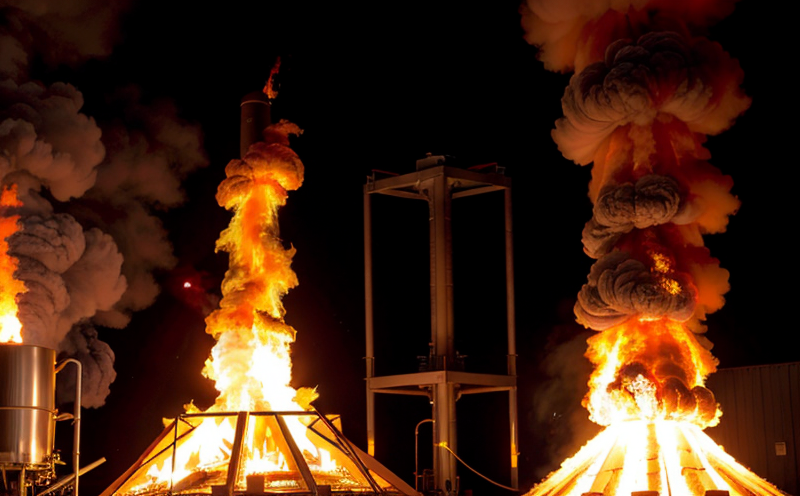Plywood Flammability Testing
Plywood flammability testing is a critical component of ensuring that materials meet fire safety standards and regulations. This type of testing evaluates the combustibility, ignition characteristics, and flame spread behavior of plywood under controlled laboratory conditions.
Flammability tests are performed to comply with various international standards such as ASTM E84, IEC 60332, and EN 455-2. These standards provide specific criteria for determining the flammability performance of materials used in construction and furniture industries. The results of these tests help manufacturers ensure their products meet legal requirements and are safe for use.
The test involves exposing a specimen of plywood to a standardized flame source, typically a Bunsen burner or an electric heater, and measuring various parameters such as the time it takes for the fire to start, its spread rate along the surface of the material, and the degree of flame propagation. The test also evaluates smoke production and toxicity levels.
The results are classified into different categories based on the performance observed during testing. These categories can range from Class 1 (highly flammable) to Class A (non-flammable). Compliance with these classifications ensures that plywood products are suitable for specific applications, such as interior partitions or exterior walls in buildings.
Proper specimen preparation is crucial for accurate testing results. Specimens should be cut into standard sizes and shapes, ensuring uniform thickness throughout the sample. This consistency allows for repeatable tests and reliable data collection. Additionally, environmental factors like humidity and temperature must be controlled during testing to prevent variations in test outcomes.
Understanding the importance of flammability testing is essential for quality managers, compliance officers, R&D engineers, and procurement professionals who are involved in product development and material selection processes. By adhering to rigorous testing protocols, these stakeholders can ensure that their products comply with relevant safety regulations while maintaining high-quality standards.
Why It Matters
Flammability testing is a vital aspect of ensuring the safety and compliance of plywood materials. Compliance with fire safety standards can prevent severe accidents, reduce property damage, and save lives in case of fires. For quality managers and procurement officers, meeting these requirements ensures that their suppliers meet industry best practices.
For R&D engineers, understanding flammability characteristics is crucial for developing safer products. By testing materials under controlled conditions, they can identify potential hazards early on and make necessary adjustments to improve product safety.
The results of flammability tests play a significant role in the design and construction industries. Architects, builders, and contractors rely on these data points when selecting appropriate plywood for various projects. This information helps them choose materials that will contribute positively to overall fire safety without compromising structural integrity or aesthetics.
Benefits
- Enhanced Safety: Ensures compliance with local and international fire safety regulations, reducing the risk of accidents involving plywood products.
- Improved Reputation: Demonstrates commitment to quality and safety standards among customers and stakeholders, enhancing brand reputation.
- Regulatory Compliance: Helps businesses avoid legal penalties associated with non-compliance by ensuring that all materials meet required specifications.
Use Cases and Application Examples
| Application Example | Flammability Classification | Description |
|---|---|---|
| Interior partitions in commercial buildings | Class A | Plywood used for interior partitions must be non-flammable to prevent the spread of fire within a building. |
| Exterior walls in residential construction | Class B1 | Class B1 plywood can withstand low levels of flame spread and is suitable for exterior wall applications where fire resistance is important but not the highest priority. |
| Furnishings in public spaces | Class A | Plywood used in furnishings like chairs, sofas, and tables placed in public areas should be non-flammable to minimize fire risks in crowded environments. |





